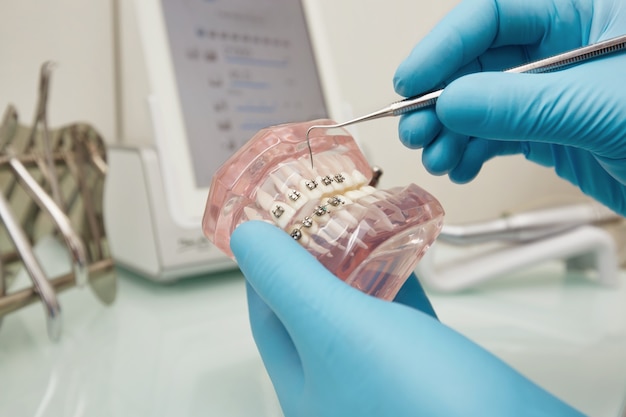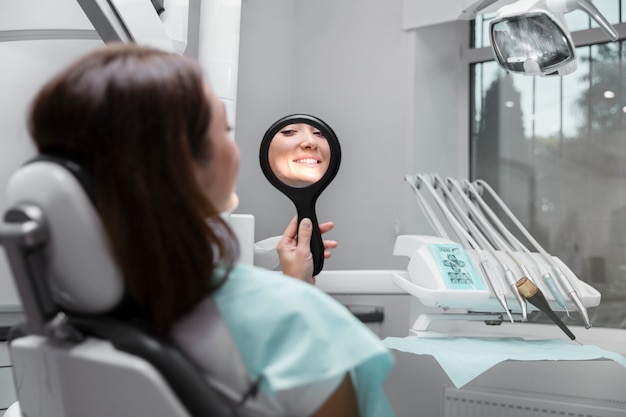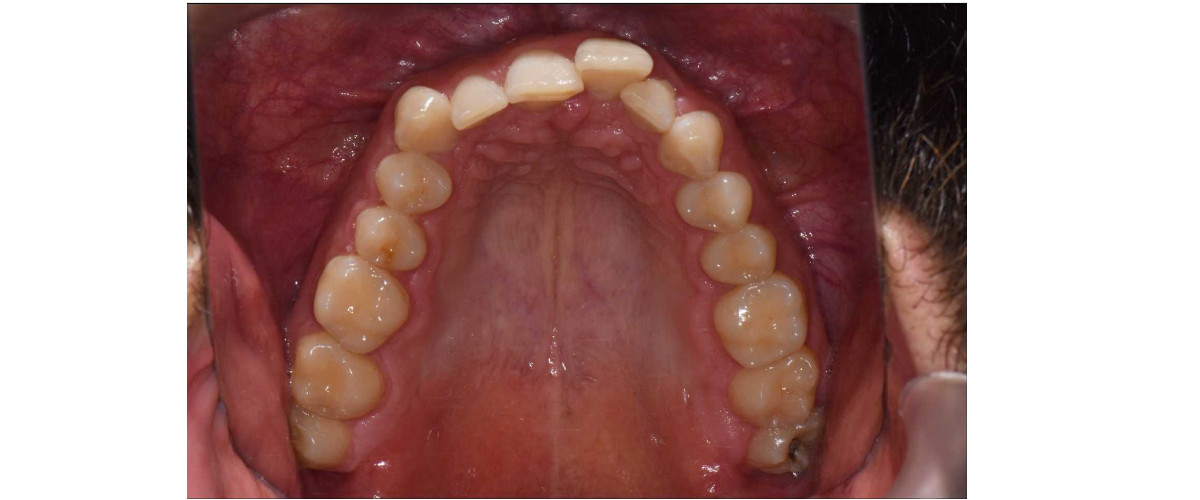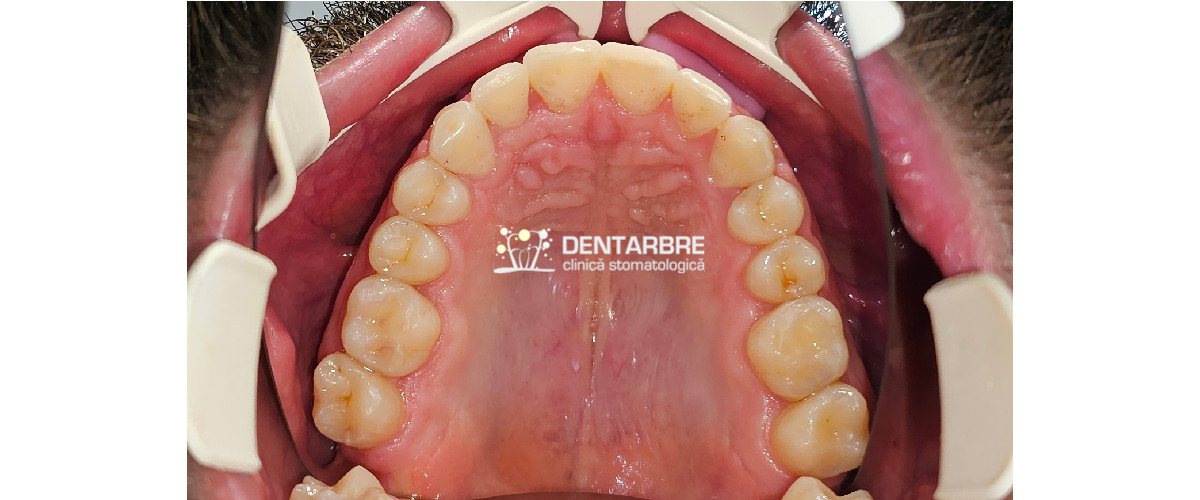Orthodontics is a complex branch of dentistry that deals with the analysis, prevention and correction of dental positioning anomalies and jaw imbalances. Orthodontic interventions influence not only the aesthetic alignment of the teeth, but also the functionality of the occlusion, muscle balance and temporomandibular joint health. Orthodontic anomalies that are not treated in time can lead to mastication disorders, speech difficulties, mouth breathing, excessive tooth wear or secondary tooth migration.
What is orthodontics?
Orthodontics is the science that examines the relationship between the teeth, jaw bones and orofacial muscles, defining criteria for occlusal normality. The discipline uses biological laws related to the remodeling of the alveolar bone under tension and compression. The central objective involves mechanical, functional and aesthetic harmonization, in order to maintain periodontal health. In clinical practice, orthodontics integrates knowledge of joint, neuromuscular and craniofacial physiology and development.
What does an orthodontist do?
An orthodontist performs the differential diagnosis of malocclusions, formulates the prognosis of craniofacial growth and designs the dental appliances used in orthodontic treatment. During the active phase of orthodontic treatments, the orthodontist supervises the reaction of the periodontium, adjusts the arches and elastics of the dental appliance and monitors the distribution of forces on the dental units to prevent unwanted effects, such as external root resorption or morphological defects of the alveolar bone.
When is orthodontic treatment recommended?
Any deviation from the ideal occlusion, which generates an incorrect distribution of masticatory forces, joint overload and risk of caries, requires orthodontic treatment. The main dental conditions that require orthodontic treatment include:
- dental malocclusion;
- diastemas;
- maxillary dental protrusions;
- dental overlap;
- transverse or sagittal maxillary displacement;
- dental impaction, especially palatal canine;
- dental ectopia;
- anodontia.
Orthodontics for children
In children, jawbone growth is predominantly completed between the ages of 10 and 12, so orthodontic interventions performed before this interval can positively influence the direction of bone development, without the need for subsequent invasive procedures. The American Academy of Orthodontics recommends the first orthodontic evaluation at age 7, a period in which permanent incisors and first molars are erupting, and craniofacial sutures are plastic.
Benefits of orthodontic treatment
From improving dental aesthetics to reducing the risk of gum disease, the benefits of orthodontic treatment are multiple and significant. Orthodontic therapy generates advantages on multiple biological and psychosocial levels. Among other things, orthodontic treatment determines:
- improving dental aesthetics;
- reducing the risk of dental caries and gum disease;
- uniform distribution of masticatory forces;
- directing the eruption of permanent teeth;
- supporting the growth of jaw bones;
- improving speech.
Types of orthodontic treatments
Technological progress has led to a substantial diversification of therapeutic devices. The biomechanical concept remains constant – the application of a controlled force that causes alveolar remodeling – but the transmission methods vary. The orthodontist selects the technique depending on the patient's age, the severity of the anomaly, compliance and psychological profile.
Braces
The conventional fixed system involves the use of metal, ceramic or sapphire brackets, connected with a thermodynamic orthodontic wire. Traditional braces, with brackets, are used for moderate to severe malpositions, but can also be used for minor teeth alignment problems, if the patient has a limited budget or a preference for such a device.
Orthodontic aligners
Functional or retention aligners, made of thermoformable material, cover the arches and exert forces on the teeth, to straighten their position, respectively to maintain the position obtained. In pediatrics, aligners are also used for neuromuscular reprogramming, favoring nasal breathing. Personalization through digital scanning ensures precise adaptation, and transparency increases psychological acceptance.
Disjunctor
The disjunctor is an orthodontic device intended for transverse expansion of the upper jaw by separating the median palatal suture. The disjunctor is mainly used in orthodontic treatments in children and adolescents, but can also be applied to adults with the help of associated surgical techniques (surgically assisted maxillary expansion). Indications for the use of the disjunctor include narrowing of the upper arch, mouth breathing associated with nasal obstruction, unilateral or bilateral posterior crossbite, and transverse dentoskeletal discrepancies.
Aligners
Spark or Invisalign clear aligners are successive series of thermoformed trays that move the teeth incrementally. Each set is worn for 7-10 days, producing 0.25 mm of movement. The main limitation of clear aligners concerns the need for minimum compliance of 22 hours daily.
Types of dental braces at DentArbre
DentArbre dental clinic in Bucharest offers a diverse range of dental braces, adapted to the clinical and aesthetic needs of patients of all ages. To select the optimal device, the clinic uses modern diagnostic technologies, digital intraoral scanning and three-dimensional planning, while also taking into account the type of malocclusion, the degree of dental crowding, aesthetic sensitivity and the level of compliance. Patients benefit from detailed counseling and flexible financial solutions.

Ceramic braces
Ceramic braces are made of brackets made of polycrystalline aluminum oxide, a material with an opaque appearance, close to the natural color of tooth enamel. Ceramic brackets, compared to metal ones, have increased fragility, and compared to sapphire brackets, they have reduced resistance to food pigments. However, from an aesthetic point of view, they represent a solution for those who want a more natural appearance and are indicated in mild to moderate malocclusions.
Sapphire Braces
Sapphire braces are distinguished by their transparent brackets, made of sapphire oxide monocrystals, precisely ground to provide maximum translucency. The material is biocompatible, chemically inert and extremely resistant to abrasion. Unlike polycrystalline ceramics, sapphire does not pigment, does not change its texture and provides a smooth surface, which minimizes mucosal irritation.
Spark Invisible Braces
Spark orthodontic system uses transparent aligners made of an advanced polymer (TruGEN), designed to apply constant forces over an extended period and increased comfort. The aligners are personalized for each patient, based on a 3D digital scan and a biomechanical planning algorithm, which determines the exact sequence of dental movements. Spark treatment is indicated in cases of dental alignment, spacing, post-treatment relapses or moderate rotations. Each aligner produces a tooth movement of 0.25 mm and is worn for approximately 7–10 days.
Stages of orthodontic treatment
Orthodontic treatment follows a logical sequence of stages, each based on an objective assessment, biomechanical planning and clinical monitoring. The process begins with the identification of occlusal anomalies and ends with the stabilization of the dental position, with retention devices.
Initial consultation
Initial consultation is the preliminary stage of orthodontic therapy. At this stage, the orthodontist collects detailed medical and dental data, identifies possible systemic or periodontal pathologies and evaluates the craniofacial morphology, facial proportions and type of occlusion. An intraoral digital scan of the dental arches is performed, subsequently an orthodontic file is prepared that includes: a thorough clinical examination, intraoral and extraoral photographs, panoramic radiographs and lateral teleradiographies of the skull, in some cases detailed CT scans.
Establishing the treatment plan
The data obtained during the initial consultation serve to establish the diagnosis, including the skeletal, dental and muscular components involved in the malocclusion. The orthodontic treatment plan is developed based on cephalometric analyses, the study of dental models and the three-dimensional evaluation of the arches. The orthodontist determines the directions of the necessary tooth movements, establishes the need for extractions, the possible use of skeletal anchors, the disconnector or other adjuvant devices.
Applying the dental braces
Applying the dental braces involves an elementary technical stage, in which the precision of the positioning of the brackets or the adaptation of the trays determines the subsequent biomechanical efficiency. In the case of fixed appliances, the orthodontist uses either the direct method, in which each bracket is manually positioned on the tooth, or the indirect technique, with transfer through a silicone tray from a 3D printed model.
Periodic consultations
Periodic consultations are designed to monitor the progress of treatment, adjust the applied forces and prevent complications. They are carried out at intervals of several weeks, depending on the type of appliance used and the individual biological response of the patient. At each visit, the orthodontist inspects the condition of the periodontium, checks the position of the teeth, measures the degree of tooth movement observed and replaces or reactivates mechanical components (springs, elastics, ligatures).
End of treatment
The end of the active phase of orthodontic treatment involves removing the appliance, completely cleaning the tooth surfaces and applying the retainers. The stability of the results obtained depends on this stage, as the periodontal tissues and gingival fibers retain a “memory” of the initial position. Either a fixed retainer or transparent aligners, made classically or digitally, are applied.
How long does orthodontic treatment last?
The duration of orthodontic treatment is not standardized, but is determined individually, depending on the complexity of the malocclusion, the patient's age, the type of appliance used, and the biological response of the tissues to the applied forces. On average, active treatment lasts between 12 and 36 months. Simple cases, involving only the alignment of the anterior teeth, can be treated in 6–12 months, while skeletal anomalies, multiple rotations, severe crowding, or major transverse discrepancies require extended therapeutic periods.

How much does orthodontic treatment cost?
The cost of the orthodontic treatment reflects a number of variables, including the type of chosen braces, the degree of difficulty of the malocclusion, the technology involved in the planning, and the total duration of the therapy. DentArbre dental clinic in Bucharest offers personalized options, with financial transparency and the possibility of payment in installments. Prices differ depending on the materials used (metal brackets, ceramic, sapphire, aligners), the need for auxiliary devices (disconnectors, mini-implants, retainers) and the frequency of consultations.
Prices vary depending on the case, and the initial consultation provides a personalized financial estimate. Treatments can be paid in full or in installments, depending on the patient's preferences.
How to maintain braces?
Proper maintenance of braces is an indispensable component of long-term orthodontic success and involves adopting a rigorous oral hygiene protocol, following dietary recommendations and regularly attending orthodontic check-ups. Any negligence in maintenance can lead to the appearance of cervical caries, gingival inflammation, enamel decalcification or even affecting the mechanics of the braces.
Patients wearing fixed braces should use an electric toothbrush with a special orthodontic tip, which facilitates cleaning around brackets and arches. Brushing is performed after each meal, for a minimum of two minutes, emphasizing the vestibular and interdental surfaces. For patients with transparent aligners, maintaining hygiene involves cleaning the devices after each use with antiseptic solutions or specially designed effervescent tablets. Aligners should not be washed with hot water or abrasive toothpaste, as these can cause deformation of the material and reduce transparency.
Photo source: Freepik
Bibliography:
https://my.clevelandclinic.org/health/treatments/24285-orthodontics
https://www.news-medical.net/health/What-is-Orthodontics.aspx
https://www.nhs.uk/conditions/orthodontics
https://bos.org.uk/patients/treatments/orthodontics-for-adults/why-orthodontics
https://aaoinfo.org/resources/why-orthodontics
https://www.denverorthopedo.com/blog/2023/02/understanding-the-five-stages-of-braces
https://sparkaligners.com/en-eu
https://www.nhs.uk/conditions/orthodontics/treatments
Frequently asked questions about orthodontics

Dr. Laura Roșca answers questions:
Prices Orthodontics - Dental Braces Bucharest
Doctors who provide this service

Study cases
+40787877799
contact@dentarbre.comZona Obor - Colentina - Doamna Ghica, București, Romania


